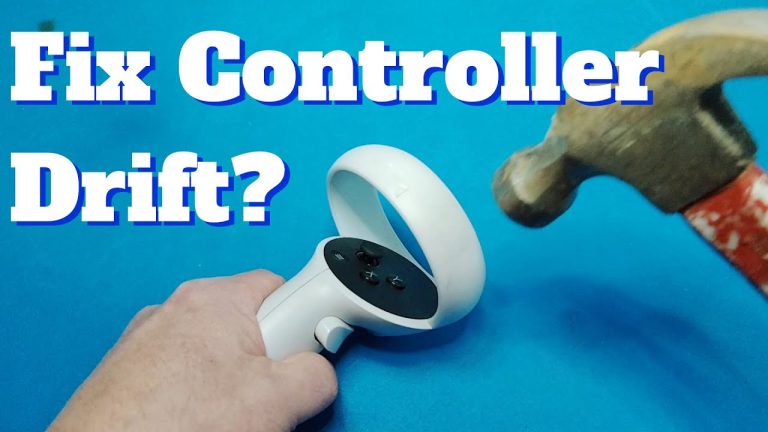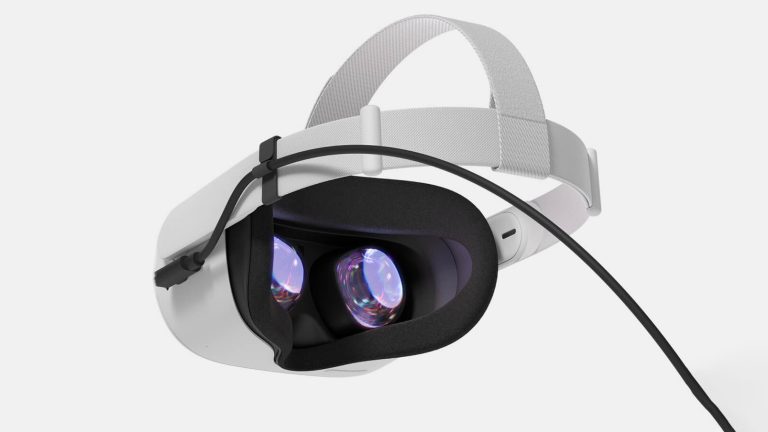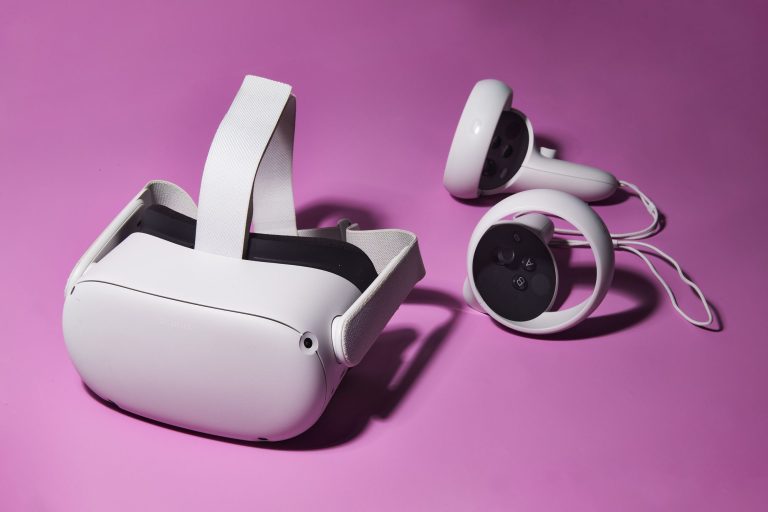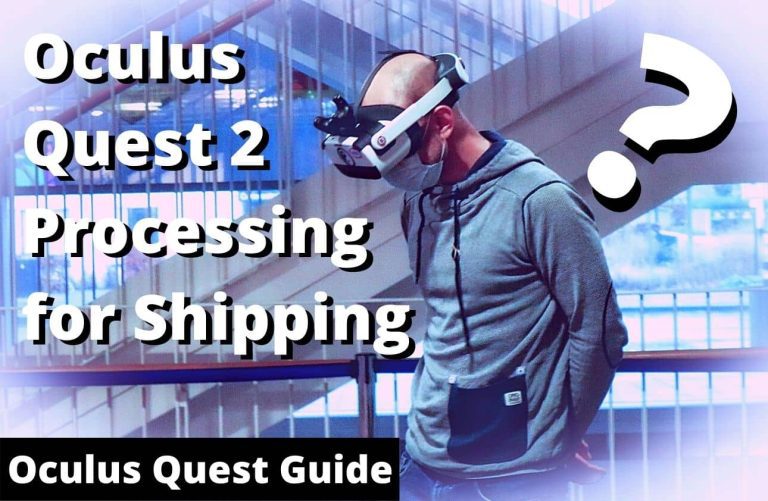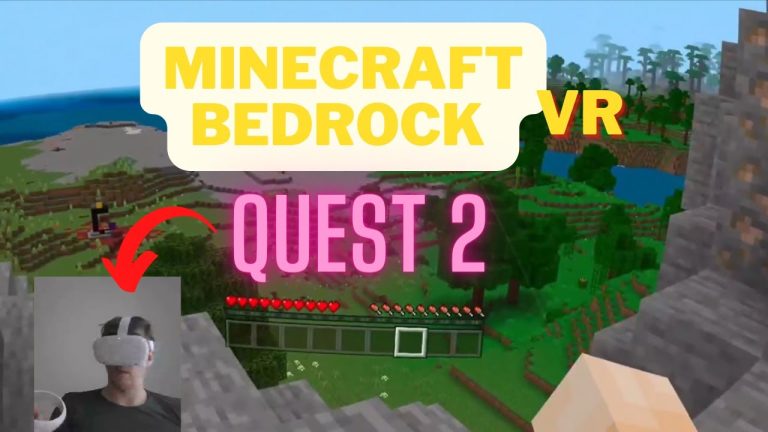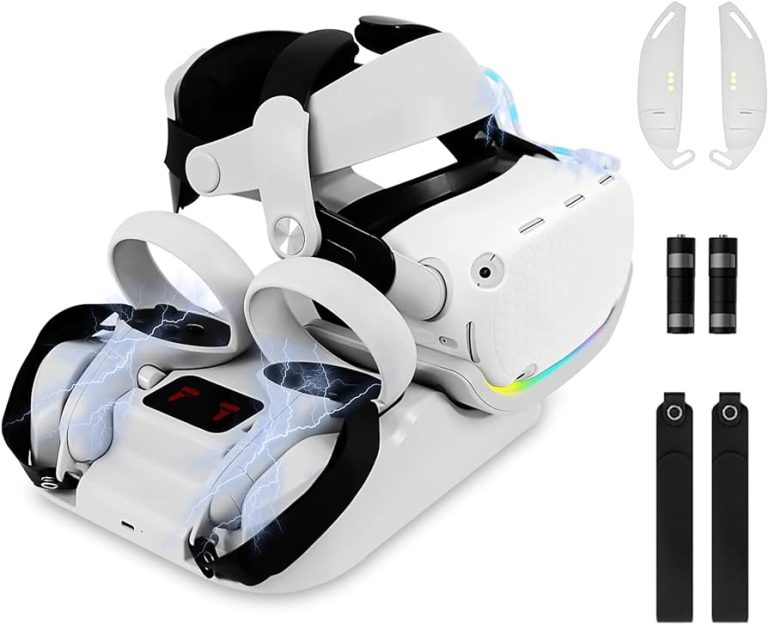Oculus Quest 2 Leg Tracking: Unleash Virtual Freedom!
Oculus Quest 2 does not natively support leg tracking. Third-party accessories are required to add this functionality.
The Oculus Quest 2, a standalone VR headset, has revolutionized virtual reality with its user-friendly design and immersive experience. To enhance its capabilities, some enthusiasts seek to add leg tracking for a more complete VR embodiment. As the headset does not offer this feature out of the box, additional hardware from other manufacturers must be used.
These accessories track leg movements, allowing for a fuller range of interaction within the virtual space. DIY solutions and dedicated sensors have been developed by the VR community to bridge this gap, making full-body tracking possible for Quest 2 users seeking a deeper level of immersion in their VR sessions.

Credit: www.kickstarter.com
Oculus Quest 2 Leg Tracking: Unleash Virtual Freedom!
Oculus Quest 2’s leg tracking feature significantly enhances the immersive experience in virtual reality. It allows users’ leg movements to be accurately represented within the VR environment, creating a more realistic and engaging interaction. This technology brings a new level of freedom to users, providing them with the ability to walk, kick, or perform any lower-body actions as they would in real life.
The technology utilizes advanced algorithms and sensors to effectively track leg movements. This captures the nuances of human motion, translating them into virtual actions with remarkable precision. Such advancements have the potential to revolutionize gameplay, making it much more dynamic and intuitive.
| Potential Application | Beneficial Impact |
|---|---|
| Sports Simulations | Enhanced realism in sports-related games and training programs |
| Dance and Fitness | Improved tracking for exercise routines and dance choreography |
| Action and Adventure | More immersive combat and exploration experiences |
| Social VR Platforms | Richer interaction possibilities with accurate body language representation |
Exploring Leg Tracking Tech
VR leg movement simulation forms an integral part of immersive virtual experiences, enhancing realism by tracking the user’s lower body movements. Leg tracking technology in VR is evolving rapidly, shifting from the traditional reliance on hand controllers to sophisticated motion detection systems.
The newer systems incorporate infrared and camera-based motion detection to offer accurate tracking of leg positions and movements. By mapping the user’s physical movements into the virtual environment, these advancements provide a more authentic and engaging VR experience. This leap from hand controllers to full-body motion sensing marks a significant milestone for VR interactivity, opening doors to new applications and gaming possibilities.
Setting Up Your Oculus Quest 2
To initiate leg tracking with the Oculus Quest 2, certain equipment is necessary. It includes the VR headset, compatible leg tracking accessories, and software that supports the tracking. Users will need to purchase additional trackers since the Oculus Quest 2 does not natively support leg tracking. The standard package also requires controllers and a stable Wi-Fi connection for software updates and tracking enhancement.
Step-by-step setup guide
First, securely attach the trackers to your legs as directed by the accessory manufacturer. Next, ensure the Oculus Quest 2 is updated to the latest firmware. Pair your leg trackers with the headset through the Bluetooth connection settings. Lastly, calibrate the system by following the on-screen instructions within the VR environment to sync the movements accurately.
Ensuring the optimal play area
Creating an optimal play area is crucial for an immersive experience. The area should be spacious, free of obstacles, and well-lit to allow for proper sensor detection. A play space of at least 6.5 feet by 6.5 feet is recommended. Avoid direct sunlight on sensors and reflective surfaces that might cause tracking issues. For the best results, the flooring should have a non-reflective surface.
Games With Enhanced Experience
Leg tracking technology significantly enhances the realism of VR experiences, and the Oculus Quest 2 has sparked interest among fans and developers alike. Titles like “VRChat” and “High Fidelity” have taken the lead, allowing players to express themselves through full-body avatars. The integration of leg tracking in these games expands the interaction possibilities, making the virtual experience more immersive and engaging.
Anticipation is growing for new releases as the community eagerly awaits the announcement of upcoming titles. Prospective games are expected to push the boundaries of VR immersion, utilizing leg tracking to offer a more complete representation of the player’s movements within the game world.
Conversations with developers reveal a passionate interest in exploring leg tracking. They are actively seeking ways to incorporate this feature to provide a more natural and intuitive experience for players. The consensus is that leg tracking will soon become a standard expectation in high-quality VR games.
Read More – 5 Digit Code Oculus Quest? Solve Pairing Problems!
Harnessing Full Body Vr Fitness
Oculus Quest 2 pushes the envelope with the implementation of leg tracking capabilities, augmenting the virtual reality (VR) workout experience. Users now can enjoy a more comprehensive full-body fitness regime that includes a range of lower-body exercises.
Several fitness applications have risen to prominence by incorporating leg detection technology, offering users a variety of workout routines designed to maintain engagement and motivation. These apps utilize the leg tracking feature to provide real-time feedback, correct posture and enhance the overall workout effectiveness.
Leg tracking in VR workouts contributes to a multitude of health benefits. Engaging the lower body can lead to improved balance, strengthened leg muscles, and increased cardiovascular health. It also ensures a more balanced exercise routine by preventing the overemphasis on upper body movement that can occur in traditional VR fitness scenarios.
Troubleshooting Common Issues
Oculus Quest 2 leg tracking may encounter calibration hiccups, which can often be resolved through a series of fixes. Ensure your play area is well-lit and free of obstructions to facilitate better sensor detection. Users should also confirm that the firmware is updated to the latest version, as outdated software can lead to tracking issues.
For accurate leg recognition, maintaining the correct distance between the sensors and your legs is crucial. It’s also important to wear clothing that contrasts with the background, as similar colors can confuse the system. If these steps do not resolve the problem, recalibrating the device from the settings menu can help improve tracking accuracy.
Exploring user forums and reaching out to support resources can provide additional insights and solutions. Community members often share their experiences and troubleshooting techniques that can be of great help. The official Oculus support page also offers guides and assistance for more complex issues.
Extending The Immersion
The Oculus Quest 2 is a leap forward in virtual reality (VR), providing users with an outstanding level of immersion through its advanced hand and head tracking capabilities. To further enhance this experience, leg tracking accessories are being developed, aiming to sync the movements of the user’s legs with the virtual environment. This integration promises a more holistic VR experience, mimicking natural movements and gestures with impressive accuracy.
The market is gradually introducing various accessories designed to achieve seamless leg tracking. From wearable sensors to camera-based systems, each accessory seeks to capture leg movements and translate them into real-time, in-game actions. Such advancements are setting the stage for the future of full-body virtual reality, where the line between the physical body and the virtual avatar begins to blur, offering a truly immersive and interactive VR journey.
| Accessory Type | Function |
|---|---|
| Wearable Sensors | Attach to the user’s legs to directly track movements. |
| Camera-Based Systems | Use external cameras to capture and interpret leg actions. |
Community And Mod Support
The Oculus Quest 2 has sparked the imagination of VR enthusiasts, with the possibility of leg tracking becoming a hot topic. The VR community plays a pivotal role in pioneering this advancement. Numerous online forums and groups are dedicated to discussing the ins and outs of leg tracking, providing a platform for sharing ideas, experiences, and support.
Popular mods and enhancements have emerged from this collaborative environment, pushing the boundaries of what’s possible with the Oculus Quest 2. Enthusiasts can find a variety of DIY projects and software mods that aim to integrate leg tracking into their VR experience. These mods not only enhance gameplay but also serve as a testament to the ingenuity of the VR community.
Those with a passion for VR technology can contribute to leg tracking development. By participating in forums, contributing to open-source projects, or developing new mods, individuals can help shape the future of Oculus Quest 2 leg tracking capabilities. This collective effort is crucial in driving the technology forward and expanding the horizons of immersive gaming and applications.
Leg Tracking For Developers
Oculus Quest 2 has sparked excitement among developers with its potential for leg tracking capabilities. The introduction of the SDK and API for leg tracking development is an innovative leap towards creating more immersive VR environments. These tools empower developers to build applications that can accurately interpret the user’s leg movements.
This advancement is pivotal as it allows for a new dimension of interaction within the virtual realm. The emergence of SDKs and APIs dedicated to leg tracking is not just a testament to the evolution of VR technology but also to the commitment to providing developers with the resources they need to enhance user experiences.
By leveraging these technologies, several case studies show successful implementations, where games and simulations have become exceedingly realistic, providing users with an unprecedented level of immersion. Consequently, developers are at the forefront of exploring this uncharted territory, which promises to revolutionize the realm of interactive virtual reality experiences.
The Potential Of Leg Tracking Beyond Gaming
Oculus Quest 2’s leg tracking technology has significant potential beyond the realm of gaming, particularly in the field of education. Educational applications may include interactive learning experiences where students can physically engage with the material, such as participating in virtual historical reenactments or conducting scientific experiments in a controlled virtual environment. This immersive approach could revolutionize how students learn complex subjects and retain information.
Professional training and simulations are also greatly enhanced with leg tracking capabilities. From medical professionals practicing surgical procedures to first responders conducting search-and-rescue drills, leg tracking offers a hands-on approach to mastering vital skills in a safe, controlled, and cost-effective manner.
In terms of social interaction within virtual spaces, leg tracking can lead to more natural and intuitive user experiences. It allows for a fuller expression of body language and non-verbal cues, which are crucial for social presence and communication in virtual meetings, events, or casual encounters.
Frequently Asked Questions For Oculus Quest 2 Leg Tracking?
Does Oculus Quest 2 Support Leg Tracking?
No, currently Oculus Quest 2 does not natively support leg tracking. Third-party accessories and software are required to achieve leg tracking in VR. Developers are exploring new technologies and methods to implement this feature.
Can You Add Leg Tracking To Oculus Quest 2?
Yes, with additional hardware such as the Vive Tracker and supportive games or apps, you can add leg tracking to Oculus Quest 2. However, this process is not officially supported by Oculus and may require technical knowledge.
What Accessories Enable Leg Tracking On Quest 2?
Accessories like the Vive Trackers or Kinect with third-party software can enable leg tracking on Quest 2. These devices track leg movements and translate them into VR, but compatibility and setup can be complex.
Are There Any Games With Leg Tracking For Quest 2?
A few VR games and applications support leg tracking, but they often require additional hardware like the Vive Trackers. These games are not officially endorsed by Oculus and may have limited availability.
Conclusion
Leg tracking for the Oculus Quest 2 is a developing frontier, bringing us closer to full-body VR immersion. As we’ve explored, the potential for enhanced gaming, fitness, and professional applications is significant. Keep your eyes on updates from developers and Oculus itself for upcoming advancements.
Embrace the future of virtual reality as it steps into a new era of interactive experiences.

